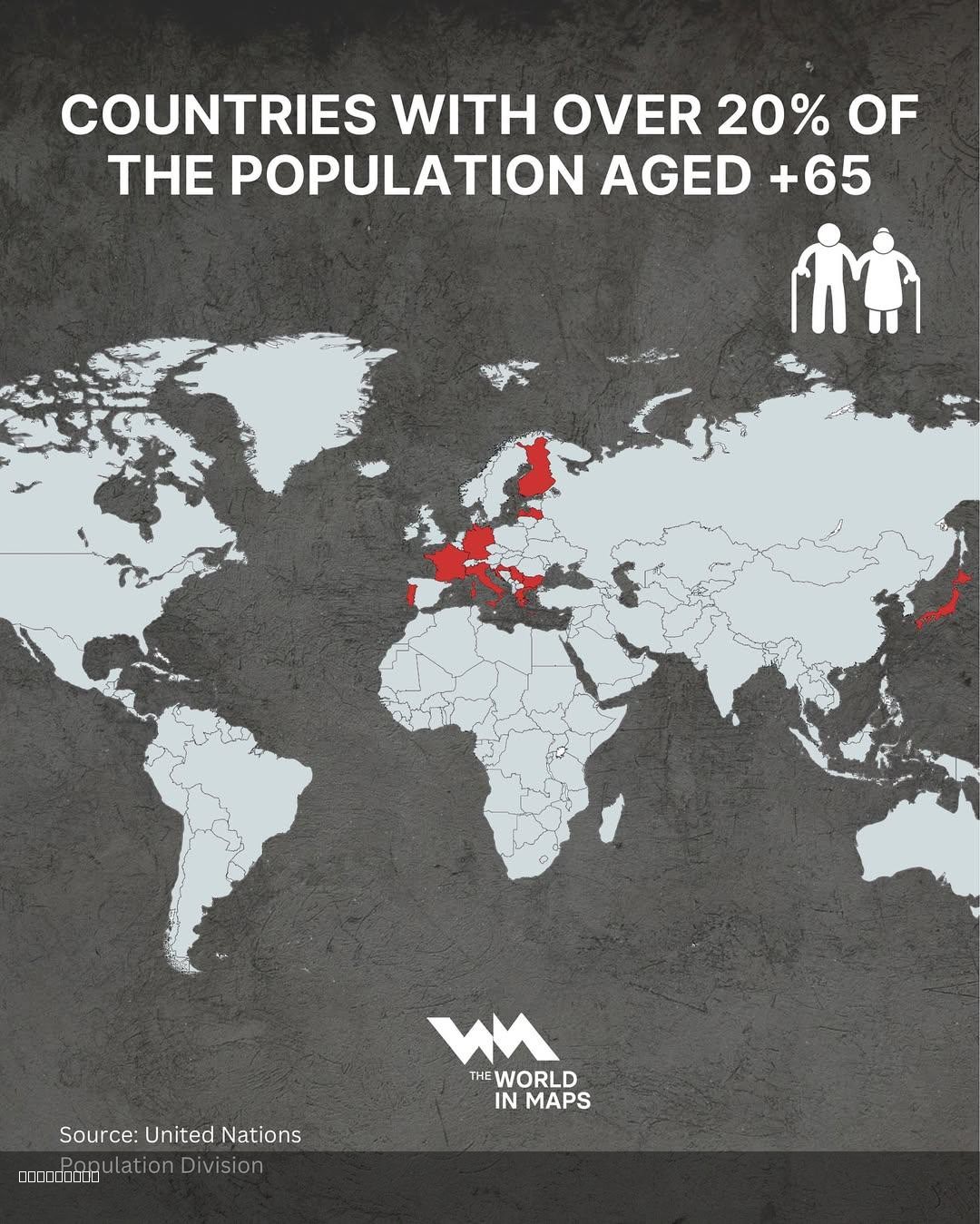Countries with Over 20% Population Aged 65+ Map


David Chen
Data Visualization Specialist
David Chen is an expert in transforming complex geographic datasets into compelling visual narratives. He combines his background in computer science ...
Geographic Analysis
What This Map Shows
This map illustrates the countries where over 20% of the population is aged 65 years and older. This demographic visualization is particularly significant as it highlights nations grappling with aging populations, which can have profound implications for social systems, healthcare, and the economy. Countries that fall within this category are often facing unique challenges, from increased demand for healthcare services to shifts in labor markets.
Deep Dive into Aging Populations
Aging populations are a global phenomenon, but the pace and impact vary significantly by region. The percentage of the population aged 65 and older is a crucial statistic as it helps us understand the demographic shifts that are reshaping societies. For instance, in many developed nations, advances in healthcare and living standards have led to increased life expectancy.
Interestingly, Japan stands out as a prime example, with nearly 29% of its population falling into this category. This trend is attributed to factors such as a low birth rate and high-quality healthcare systems, which have resulted in a significant portion of the population living longer. The implications of such a demographic shift are extensive: a heightened need for geriatric care, adjustments in pension systems, and even changes in cultural attitudes toward aging.
In contrast, countries like Italy and Germany also experience high percentages of elderly citizens, with figures around 23% and 22% respectively. These nations face similar challenges, such as managing healthcare costs and ensuring adequate support for an aging workforce. Moreover, migration patterns play a role in these demographics. For instance, younger populations in countries like Italy are increasingly moving abroad for job opportunities, leaving behind an older demographic that requires sustained care and support.
What's fascinating is the stark differences in how countries respond to these demographic changes. For instance, while Japan is focusing on robotics and automation to counteract labor shortages, countries like Italy are investing more in community-based care systems to support their elderly population.
Regional Analysis
When we look at different regions represented on the map, we can see distinct patterns. In Europe, many countries exceed the 20% threshold, with nations like Greece and Portugal also joining the ranks. In Greece, approximately 22% of the population is aged 65 and older, influenced by a declining birth rate and a growing life expectancy. This demographic trend poses challenges for the healthcare system and the economy, requiring innovative solutions to support the aging populace.
Moving to Asia, countries such as South Korea, which is projected to reach over 20% by 2025, are experiencing rapid demographic changes that could lead to a labor shortage as the working-age population shrinks. In contrast, many African nations still have a relatively young population, but it's essential to recognize that as healthcare improves, these demographics could shift in the coming decades.
In North America, the United States is approaching the 20% mark, driven by the aging Baby Boomer generation. The implications of this trend are significant for social security systems and healthcare infrastructure, as they will need to adapt to accommodate a growing elderly demographic.
Significance and Impact
Understanding the implications of an aging population is vital for policymakers, businesses, and communities. As the elderly population increases, the demand for healthcare, social services, and elder care will intensify. Countries with high percentages of older citizens must strategize effectively to ensure that they can provide the necessary resources and support systems.
Moreover, this demographic shift might influence global economic trends. With a larger proportion of retirees, there may be fewer individuals in the workforce, potentially leading to a slowdown in economic growth. Additionally, younger generations may face increased pressure to support a growing elderly population, raising questions about intergenerational equity.
Current trends suggest that as life expectancy continues to rise, the percentage of the global population aged 65 and older will only increase. By 2050, it's estimated that 1 in 6 people in the world will be over 65. This demographic revolution prompts us to consider not only how we care for our elderly but also how we can adapt our societies to be more inclusive and supportive of all age groups. The challenges posed by aging populations are significant, but they also present opportunities for innovation in healthcare, urban planning, and social policy.
Ultimately, the insights gleaned from this map and the demographic trends it represents will be crucial in shaping our future. Have you noticed how these shifts are already influencing your local community? The way we respond to these changes will define our societies for generations to come.
Visualization Details
- Published
- August 6, 2025
- Views
- 118
Comments
Loading comments...